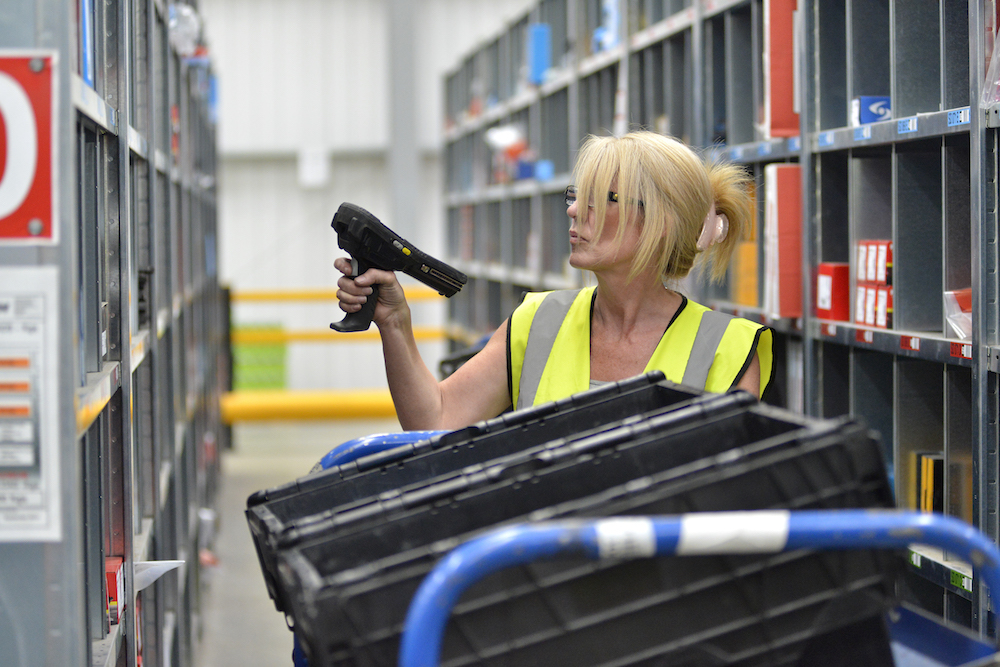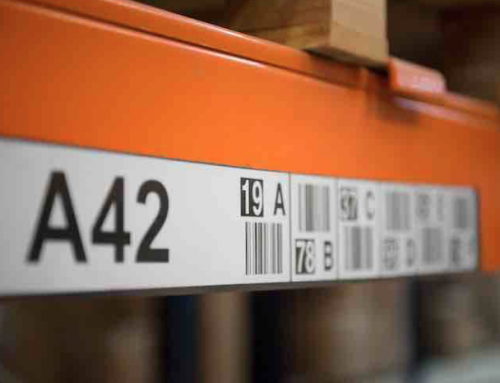The recently released handheld Android app from ProSKU provides extensive warehouse picking flexibility for e-commerce and e-fulfilment operations. Although such flexibility has long been available in enterprise level WMS systems, existing handheld applications in the e-commerce sector have, and still tend to be, the more basic ‘bolt-on’ type scan and pick solutions.
The design of the ProSKU App recognises that as much variation exists in warehouse picking methodology among smaller e-commerce and fulfilment companies as it does in larger organisations. For this reason its new Android App is equipped with the means to accommodate a variety of different warehouse picking methodologies.
The App supports the key practices of single order and wave pick as standard functions, with bulk and cluster pick (sometimes called pick and pack) provided as options. A despatch process then allows optional ‘scan to pack’ and the facility to generate carrier despatch labels where required. This means users need only add options which are operationally essential.
Single Order & Wave Picking
Single order picking is still a widespread practice, especially for bulkier products or orders containing large numbers of items that would prohibit multi-order collation. One important feature of the ProSKU Warehosue Picking App however is the ability to handle single orders consisting of both unit loads (i.e. pallets) as well as loose items using different pickers to ensure efficient use of resource.
Wave picking functionality can be invaluable for collating orders to pick, with different methodologies available to use to complete the pick process. By selecting orders on a range of criteria, which include things like customer, delivery date and time, geography or product type, order picking can be planned to comply with critical event timings like incoming stock receipts and carrier collection, and other factors such as labour availability.
In the e-commerce and fulfilment sector however there is a significant number of companies processing high order volumes with smaller item products. For these companies a single order picking process would be extremely inefficient, not least because the labour required to handle it is unlikely to be available! For that reason two methodologies which are supported by the ProSKU App, cluster picking and bulk pick and sort, may potentially offer considerable benefit.
Cluster Picking
Cluster picking enables orders to be selected by wave criteria which are then ‘clustered’ into groups to create a manageable workload for a single picker. The number of orders in the cluster will depend on factors like how many orders a picking trolley can contain, the area to be covered in a pick ‘walk’, or simply the optimum number of orders that a picker can handle without risk of error.
Once a cluster is created the picker can then follow a location walk sequence that enables multiple orders to be completed simultaneously by the end of the walk. For those who want to combine their pick and pack processes, picking product straight into despatch containers, which can then be sealed and labelled, means orders can be ready for despatch at the end of the picking process.
The option to scan locations and products and capture other data requirements, like serial numbers, is available in this process. For those wanting to pick and pack this is probably essential, so that order accuracy can be verified at this point. But if not, or if only one scan exercise is required, a subsequent scan and pack process can ensure that orders are validated correctly prior to despatch.
Bulk Pick and Sort
Bulk pick and sort is a two-stage process, as the name suggests. Like cluster picking, it also begins with the selection of orders by wave. But rather than creating clusters, for a bulk pick you select a maximum number of orders that can be handled in the first stage of the process, the picking stage. What this number is will, again, depend on factors specific to your operation.
The bulk pick also involves a walk sequence (ether default or user defined). But at each location visit, rather than pick by specific order, the entire quantity for the selected orders is picked, and so on until the end of the walk sequence. The picked product is usually placed to a container (‘media’) such as a pallet, tote, bag or as above, a trolley. The App allows this to be uniquely identified to the system to allow for ease of identification in the second stage of the process.
Once the bulk product has been picked the sort process can be completed. This can be performed using the App but might more typically be combined with a scan and pack process, which can be done at a desk using a fixed terminal and wired scanning equipment. The system will allow (and instruct) orders to be ‘sorted’ based on order reference, or by bulk media.
In the first option individual orders are assembled one by one by selecting the products needed from the bulk media (one or many) and repeating the process, order by order, until all are completed. In the second option, the bulk media can be emptied and shared out across individual orders, then repeated to empty any subsequent ones. The option you choose will depend on your own operational factors.
All methodologies described above offer excellent scope for creating a highly efficient pick and despatch function. The logic is based on minimising the picker journey, achieving the most effective handling methods for your products and utilising employee skills in each area to best effect.
E-commerce and fulfilment is a maturing sector. Companies within the sector are growing and increasing volumes and looking for adaptable technology solutions to deliver efficiency, productivity and error reduction. The ProSKU WMS and mobile App is a solution that can integrate fully with order and carrier management solutions to deliver seamless and efficient logistics operation for e-commerce business.
Contact us today to discuss how we can help your operations






